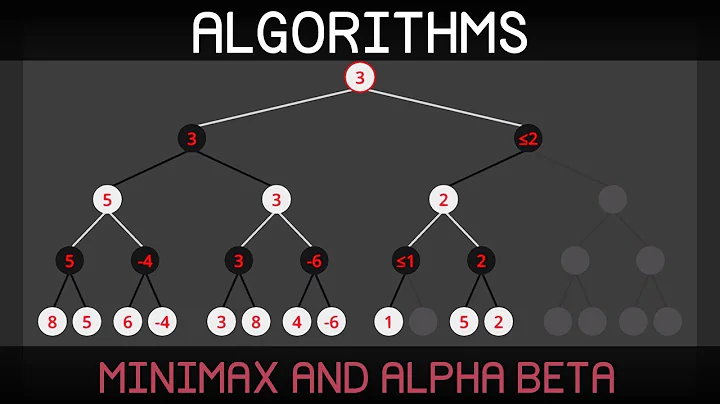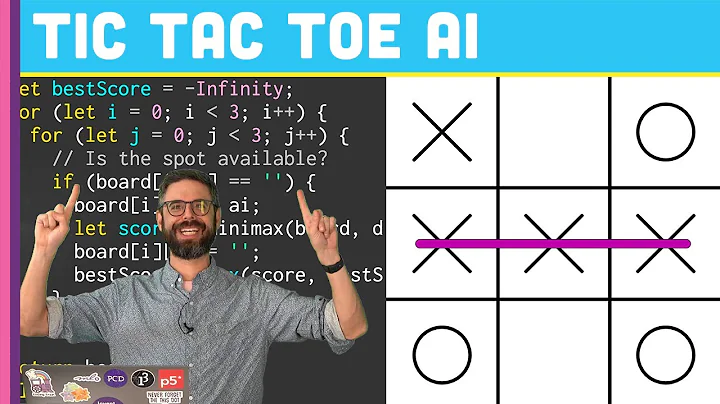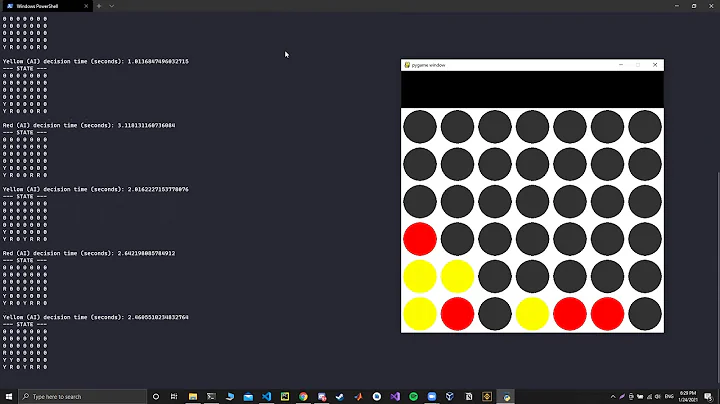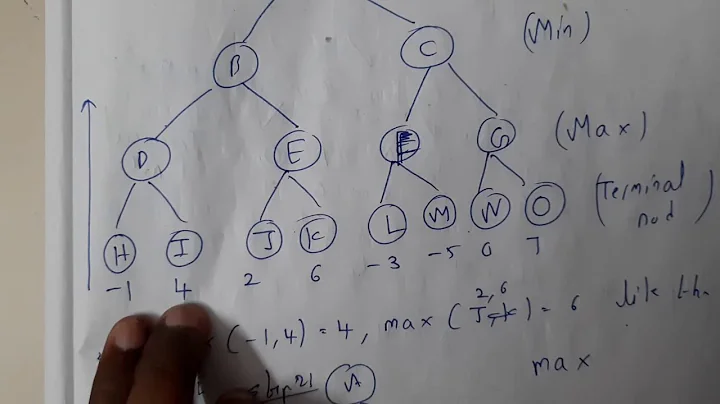Minimax algorithm: Cost/evaluation function?
Solution 1
The most basic minimax evaluates only leaf nodes, marking wins, losses and draws, and backs those values up the tree to determine the intermediate node values. In the case that the game tree is intractable, you need to use a cutoff depth as an additional parameter to your minimax functions. Once the depth is reached, you need to run some kind of evaluation function for incomplete states.
Most evaluation functions in a minimax search are domain specific, so finding help for your particular game can be difficult. Just remember that the evaluation needs to return some kind of percentage expectation of the position being a win for a specific player (typically max, though not when using a negamax implementation). Just about any less researched game is going to closely resemble another more researched game. This one ties in very closely with the game pickup sticks. Using minimax and alpha beta only, I would guess the game is tractable.
If you are must create an evaluation function for non terminal positions, here is a little help with the analysis of the sticks game, which you can decide if its useful for the date game or not.
Start looking for a way to force an outcome by looking at a terminal position and all the moves which can lead to that position. In the sticks game, a terminal position is with 3 or fewer sticks remaining on the last move. The position that immediately proceeds that terminal position is therefore leaving 4 sticks to your opponent. The goal is now leave your opponent with 4 sticks no matter what, and that can be done from either 5, 6 or 7 sticks being left to you, and you would like to force your opponent to leave you in one of those positions. The place your opponent needs to be in order for you to be in either 5, 6 or 7 is 8. Continue this logic on and on and a pattern becomes available very quickly. Always leave your opponent with a number divisible by 4 and you win, anything else, you lose.
This is a rather trivial game, but the method for determining the heuristic is what is important because it can be directly applied to your assignment. Since the last to move goes first, and you can only change 1 date attribute at a time, you know to win there needs to be exactly 2 moves left... and so on.
Best of luck, let us know what you end up doing.
Solution 2
The simplest case of an evaluation function is +1 for a win, -1 for a loss and 0 for any non-finished position. Given your tree is deep enough, even this simple function will give you a good player. For any non-trivial games, with high branching factor, typically you need a better function, with some heuristics (e.g. for chess you could assign weights to pieces and find a sum, etc.). In the case of the Date game, I would just use the simplest evaluation function, with 0 for all the intermediate nodes.
As a side note, minimax is not the best algorithm for this particular game; but I guess you know it already.
Related videos on Youtube
Dave
Updated on April 24, 2022Comments
-
Dave about 2 years
A school project has me writing a Date game in C++ (example at http://www.cut-the-knot.org/Curriculum/Games/Date.shtml) where the computer player must implement a Minimax algorithm with alpha-beta pruning. Thus far, I understand what the goal is behind the algorithm in terms of maximizing potential gains while assuming the opponent will minify them.
However, none of the resources I read helped me understand how to design the evaluation function the minimax bases all it's decisions on. All the examples have had arbitrary numbers assigned to the leaf nodes, however, I need to actually assign meaningful values to those nodes.
Intuition tells me it'd be something like +1 for a win leaf node, and -1 for a loss, but how do intermediate nodes evaluate?
Any help would be most appreciated.
-
 Nick Larsen almost 14 yearsYou are describing a Negamax algorithm. My only criticism of this is that without defining
Nick Larsen almost 14 yearsYou are describing a Negamax algorithm. My only criticism of this is that without definingincrease_monthandincrease_dayyour algorithm does not make much sense. You can increase the day to any day between the current date and 31 (depending on the current month) and you can increase the month to whichever month you would like (depending on the day). There are far more than 2 possible next states for each move. -
MAK almost 14 years@NickLarsen: True, it was not clear to me exactly how we are allowed to increase the dates from the problem statement. I'm updating my answer. Thanks.








![[AI] Thuật toán Minimax, alpha-beta](https://i.ytimg.com/vi/CAEI_J50B18/hq720.jpg?sqp=-oaymwEcCNAFEJQDSFXyq4qpAw4IARUAAIhCGAFwAcABBg==&rs=AOn4CLBVkmN8johtO1k0nNpAe5CcXr0qUw)
